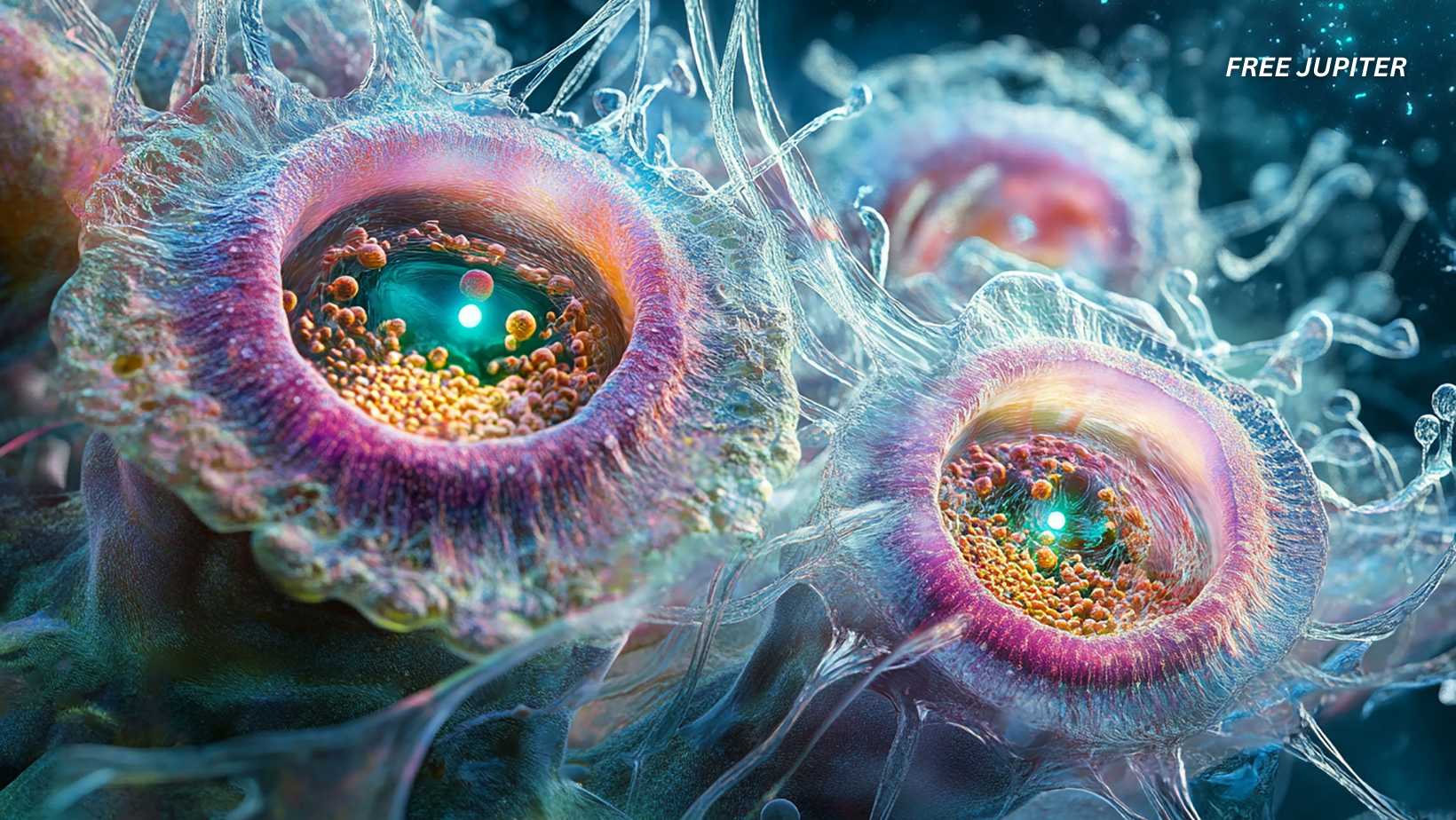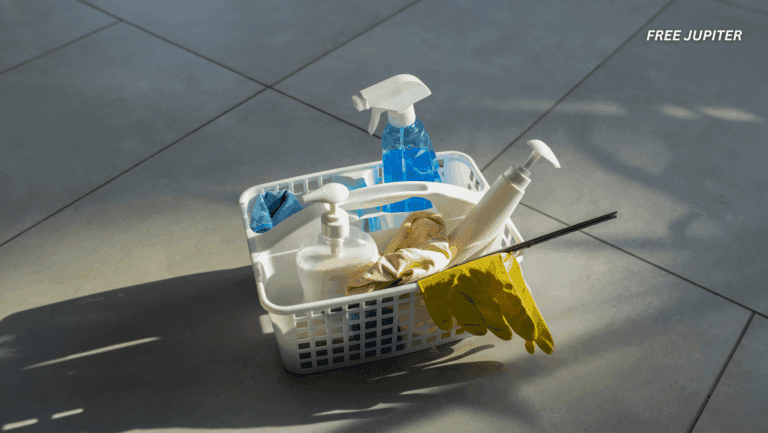For decades, one of science’s most fascinating puzzles has been this: How did life actually begin on Earth?
We know that life runs on proteins. They’re the do-it-all molecules in every living thing, handling everything from repairing damaged cells to fighting off infections. But here’s the problem: proteins themselves need other complex machines inside cells to be built. So, how did the very first proteins form before life had the tools to make them?
A new study led by Professor Matthew Powner at University College London (UCL) might have cracked part of that mystery. His team discovered a surprisingly simple chemical reaction—one that works in plain water—that could explain how nature started linking the ingredients of proteins billions of years ago.
Proteins, RNA, and the Chicken-or-Egg Problem
At the heart of this mystery are two main characters: proteins and RNA.
- Proteins are the workers of life. They carry out most cellular tasks.
- RNA is a versatile molecule that stores genetic information and can act like a chemical tool, speeding up reactions.
Modern cells rely on an intricate dance between these two. But early Earth didn’t have ribosomes (the cellular factories that make proteins). So how did proteins and RNA first team up?
This is sometimes called the “chicken-or-egg” problem of biology. Did RNA come first, or proteins? Or did they somehow evolve together?
Read more: Earth’s Water Might Not Have Originated From Asteroids After All: Scientists
The Breakthrough: Amino Acids Meet RNA
Professor Powner’s group discovered a reaction where amino acids (the small molecules that build proteins) can stick to RNA under very gentle conditions.
Here’s why this matters:
- Normally, building proteins needs highly specialized enzymes.
- But in this experiment, the team created a “shortcut.” They boosted the amino acids with a little extra chemical energy, then found they naturally latched onto RNA molecules in water.
- Even better, this process wasn’t random—it happened in specific spots on the RNA, meaning the system had some built-in order rather than total chemical chaos.
One example was particularly striking: the amino acid arginine attached to RNA’s building block adenosine at yields as high as 76%. That’s impressively efficient for something happening without life’s usual machinery.
Enter Sulfur: The Ancient Spark
The real kicker is that this reaction seems to have been powered by sulfur chemistry.
- Compounds called thioesters (tiny molecules containing sulfur) played the starring role.
- Thioesters are important in modern biology too—they help drive energy reactions inside our cells today.
- And best of all, thioesters are stable in water, making them perfect candidates for early Earth’s watery landscapes.
In fact, earlier studies showed that pantetheine (a piece of the molecule Coenzyme A, which forms thioesters in today’s cells) could arise naturally under pre-life conditions. This suggests that sulfur chemistry has been bridging the gap between non-living chemistry and living biology all along.
From Amino Acids to Peptides: Baby Steps to Proteins
Attaching amino acids to RNA was only the first step. The team showed the reaction could also create peptides—short chains of amino acids that are like baby versions of proteins.
- First, the amino acids connected to RNA.
- Then, with a mild chemical nudge, those amino acids started bonding together into chains.
- Voilà: peptidyl RNA—RNA molecules carrying tiny protein-like chains.
It’s not the fully-fledged protein world we see today, but it’s a realistic baby step toward it.
Read more: Scientists Sequenced The ‘Last Neanderthal’s’ DNA—And It Alters Our Origin Story
Where Could This Have Happened?
The chemistry works in water under near-neutral conditions—no exotic volcanoes or harsh acid pools needed.
That points to places like:
- Small lakes or ponds where molecules could gather and bump into each other more often.
- Shorelines where cycles of wetting and drying concentrate materials.
- Icy pools—yes, ice can actually help! When water freezes, it squeezes dissolved chemicals into little briny pockets where reactions speed up. The team even tested this in lab ice at about 19°F and saw it work.
In other words, this chemistry fits right in with the messy, wet landscapes Earth had billions of years ago.
Why This Matters
If true, this discovery neatly links three crucial parts of life:
- Metabolism – the chemical reactions that power cells.
- Genetics – the ability to store and pass along information.
- Proteins – the machines that make everything else happen.
Dr. Jyoti Singh, one of the study’s authors, put it best: “This discovery could potentially link metabolism, the genetic code, and protein building.”
That’s basically the holy trinity of biology.
From Chemistry to the Genetic Code
One of the most fascinating parts of this research is how it might explain the origins of the genetic code—the set of rules cells use to translate RNA “words” into proteins.
In today’s biology, RNA triplets (like AUG or GCU) correspond to specific amino acids. But in the beginning, there had to be a simpler system.
Since this reaction naturally prefers certain RNA spots over others, it suggests that some order—or even a primitive “code”—could emerge without enzymes or ribosomes. Over millions of years, that could evolve into the precise genetic system life uses today.
Related Threads in the Origin of Life Story
This isn’t the only theory about how life began. Here are a few other intriguing possibilities scientists are exploring:
- The RNA World Hypothesis: RNA came first, doing double duty as both genes and enzymes. Proteins arrived later.
- The Metabolism-First Hypothesis: Simple chemical cycles came before RNA or DNA, gradually organizing into life-like systems.
- Hydrothermal Vent Theories: Deep-sea vents provided a steady energy source and unique mineral surfaces that could have sparked prebiotic chemistry.
- Panspermia: A more radical idea—that the building blocks of life (or even microbial life itself) came from space via comets or meteorites.
This new study doesn’t rule out those ideas, but it does offer a strong bridge between the “RNA world” and the “protein world.”
Read more: Scientists Say Life Once Thrived on Mars—Then Caused Its Own Extinction
So, Did Life Just… Happen in a Pond?
If we zoom way out, the picture is almost poetic. Billions of years ago, in some shallow pool or icy puddle, tiny molecules started sticking together. Amino acids found a way to ride on RNA, sulfur lent a helping hand, and eventually, short protein-like chains were born.
Fast forward a few hundred million years, and those humble reactions evolved into the genetic code, ribosomes, and the vast, thriving diversity of life we see today—including us, pondering how it all started.
As Professor Powner said, “It seems pretty probable that this reaction would have been occurring on early Earth.”
It’s not the final answer yet, but it’s one of the clearest clues so far that life may have begun with nothing more than water, sulfur, and a few humble molecules doing what chemistry does best: experimenting.
Featured image: Freepik.
Friendly Note: FreeJupiter.com shares general information for curious minds. Please fact-check all claims and double-check health info with a qualified professional. 🌱










